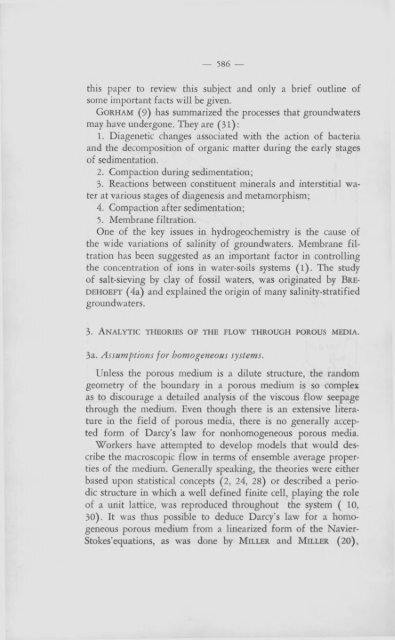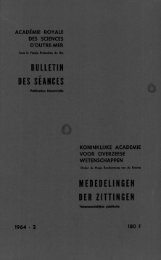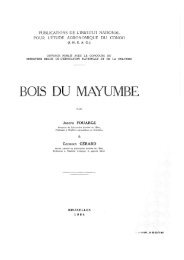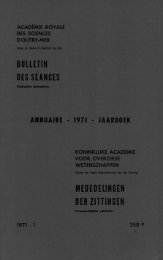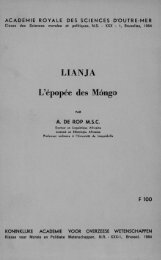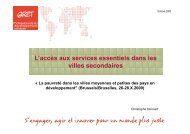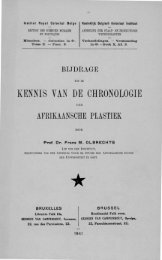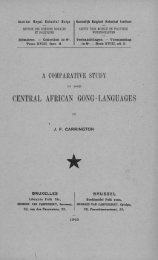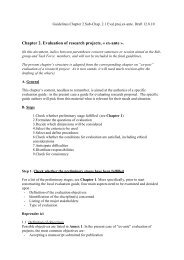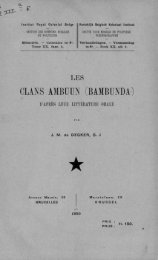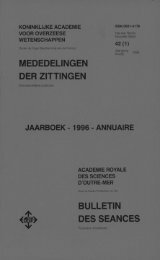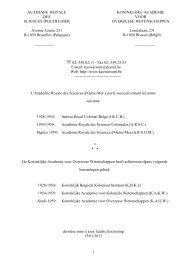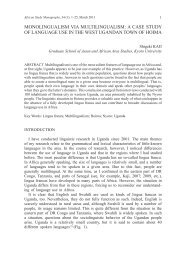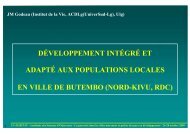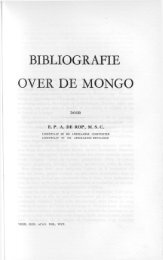(1973) n°3 - Royal Academy for Overseas Sciences
(1973) n°3 - Royal Academy for Overseas Sciences
(1973) n°3 - Royal Academy for Overseas Sciences
You also want an ePaper? Increase the reach of your titles
YUMPU automatically turns print PDFs into web optimized ePapers that Google loves.
— 586 —<br />
this paper to review this subject and only a brief outline of<br />
some important facts will be given.<br />
G o r h a m (9) has summarized the processes that groundwaters<br />
may have undergone. They are (31):<br />
1. Diagenetic changes associated with the action of bacteria<br />
and the decomposition of organic matter during the early stages<br />
of sedimentation.<br />
2. Compaction during sedimentation;<br />
3. Reactions between constituent minerals and interstitial water<br />
at various stages of diagenesis and metamorphism;<br />
4. Compaction after sedimentation;<br />
5. Membrane filtration.<br />
One of the key issues in hydrogeochemistry is the cause of<br />
the wide variations of salinity of groundwaters. Membrane filtration<br />
has been suggested as an important factor in controlling<br />
the concentration of ions in water-soils systems (1). The study<br />
of salt-sieving by clay of fossil waters, was originated by B re-<br />
d e h o e f t (4a) and explained the origin of many salinity-stratified<br />
groundwaters.<br />
3. A n a l y t ic th eories o f t h e f l o w t h r o u g h po r o u s m e d ia .<br />
3a. Assumptions <strong>for</strong> homogeneous systems.<br />
Unless the porous medium is a dilute structure, the random<br />
geometry of the boundary in a porous medium is so complex<br />
as to discourage a detailed analysis of the viscous flow seepage<br />
through the medium. Even though there is an extensive literature<br />
in the field of porous media, there is no generally accepted<br />
<strong>for</strong>m of Darcy’s law <strong>for</strong> nonhomogeneous porous media.<br />
Workers have attempted to develop models that would describe<br />
the macroscopic flow in terms of ensemble average properties<br />
of the medium. Generally speaking, the theories were either<br />
based upon statistical concepts (2, 24, 28) or described a periodic<br />
structure in which a well defined finite cell, playing the role<br />
of a unit lattice, was reproduced throughout the system ( 10,<br />
30). It was thus possible to deduce Darcy’s law <strong>for</strong> a homogeneous<br />
porous medium from a linearized <strong>for</strong>m of the Navier-<br />
Stokes’equations, as was done by M iller and M iller ( 2 0 ) ,


